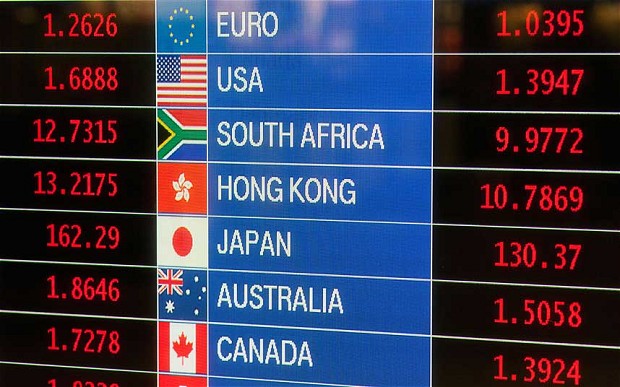Taking the Foreign out of Foreign Exchange
 With recent allegations against the Harper Government of tinkering with the value of the Canadian dollar to float the manufacturing sector ahead of the next election, Mark Borkowski explores the volatile world of foreign exchange:
With recent allegations against the Harper Government of tinkering with the value of the Canadian dollar to float the manufacturing sector ahead of the next election, Mark Borkowski explores the volatile world of foreign exchange:
Clients often want their advisors to be proactive, but foreign exchange is a matter where most advisors are reactive. Currency volatility continues to impact the bottom line of owner-operated businesses and their portfolio investments. Moreover, currency volatility continues to hide the high margins that banks generate on foreign exchange transactions, whether coming from small business paying invoices in US dollars or Euros or investors buying stocks in different currencies.
Speaking with Rahim Madhavji, president of Knightsbridge Foreign Exchange, Borkowski said that he believes the time for accepting rampant currency volatility and high currency margins is over. There are some simple tools business owners and advisors can use to minimize this risk and to validate their foreign exchange (FX) pricing. Businesses can plan ahead without having to worry about how the US dollar or Euro will impact their profit margins. Furthermore, comparing FX rates in real time with a company that specializes in the market can quickly identify methods to improve one’s bottom line or investment returns.
While banks continue to proactively service large institutions, corporate foreign exchange companies like Knightsbridge focus specifically on small and medium-sized businesses and private clients (Florida property purchasers and portfolio managers), offering better than bank FX rates as well as proactive hedging services allowing one to lock-in a rate today for a pre-determined time in the future.
“Many businesses are invoiced today in US dollars but are not required to pay for products until they are delivered months later," says Madhavji. "In that time, the exchange rate could have dramatically taken a turn for the worse, exposing the company to losses. The impact on cash flows impact the ability to repay bank debt as well as paying shareholders. Businesses should consider hedging their predictable currency requirements to protect cash flows.
According to Madhavji, in this way companies like his help businesses take the foreign out of foreign exchange.
“Similarly, investors buying stocks in US dollars are exposed to the performance of the underlying asset as well as the change in exchange rates; advisors need to evaluate if they are taking views on both or if they want to eliminate the foreign exchange risk.”
But what does this mean for your bottom line?
The big five banks have a stronghold on the corporate foreign exchange market. High currency margins of up to 2.5 per cent are hidden within the FX rate. This has created the entry of independent providers which provide more competitive pricing and proactive service.
Business owners should consider validating the FX pricing they receive with another provider to determine if there are opportunities for significant savings. A small improvement in the FX rate (i.e. 0.0050) for a business importing inventory of US$250,000 every month results in savings of $15,000 per year, for example.
Portfolio managers can realize similar savings. Instead of buying a US stock with Canadian dollar funds directly, those funds can be converted to US dollars more efficiently with an FX company, thus eliminating the banks from charging high currency margins hidden within the FX rate each time a stock is bought and sold.
What are the risks and can they be managed?
In addition to better pricing, there are a couple of things one can do to protect oneself from foreign exchange volatility.
The most common tool is a forward contract. A forward contract allows a company to lock-in an exchange rate today for use at a predetermined date in the future. A machinery importer can lock in an exchange rate of 1.0300 USD/CAD today for three months and can therefore fix its US inventory cost and know the price it should sell its products at in Canada. There is no additional fee for this product other than adjusting today’s exchange rate to reflect the time value of money between now and the maturity of the forward contract. If the exchange rate moves unfavorably, the business is not impacted. A forward contract removes the element of risk associated with future foreign currency requirements and allows one to plan ahead. However, the downside of a forward contract is that it does not allow a business to participate in the upside movements in the exchange rate. The question a business must ask itself is, does it want cost certainty or does it want to take a chance with the FX market?
Mark Borkowski is president of Mercantile Mergers & Acquisitions Corporation. Mercantile specializes in the sale of mid market companies sold to international strategic or private equity buyers. He can be contacted in confidence at mark@mercantilema.com or via the corporate website at www.mercantilemergersacquisitions.com
Rahim Madhavji is president of Knightsbridge Foreign Exchange www.knightsbridgefx.com